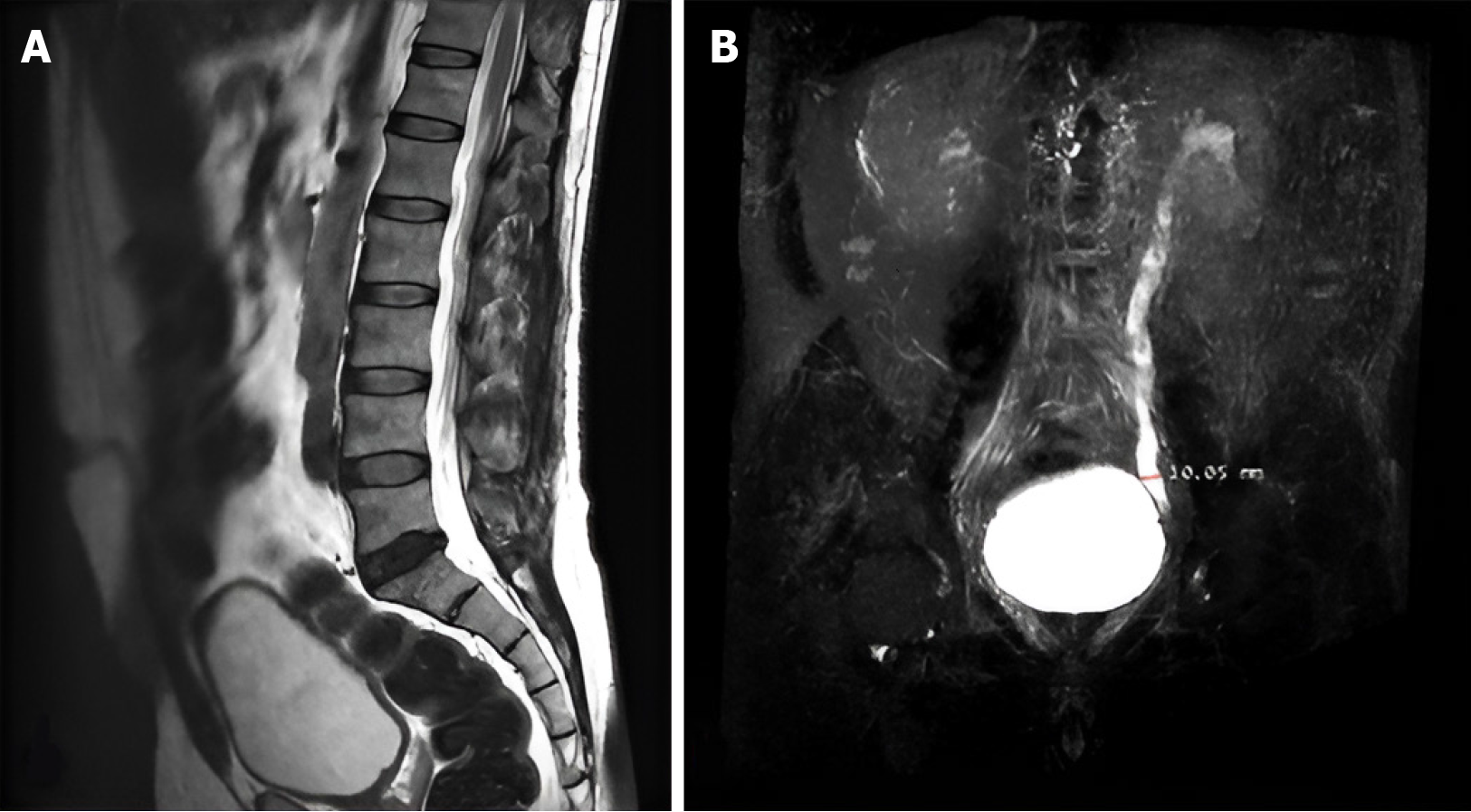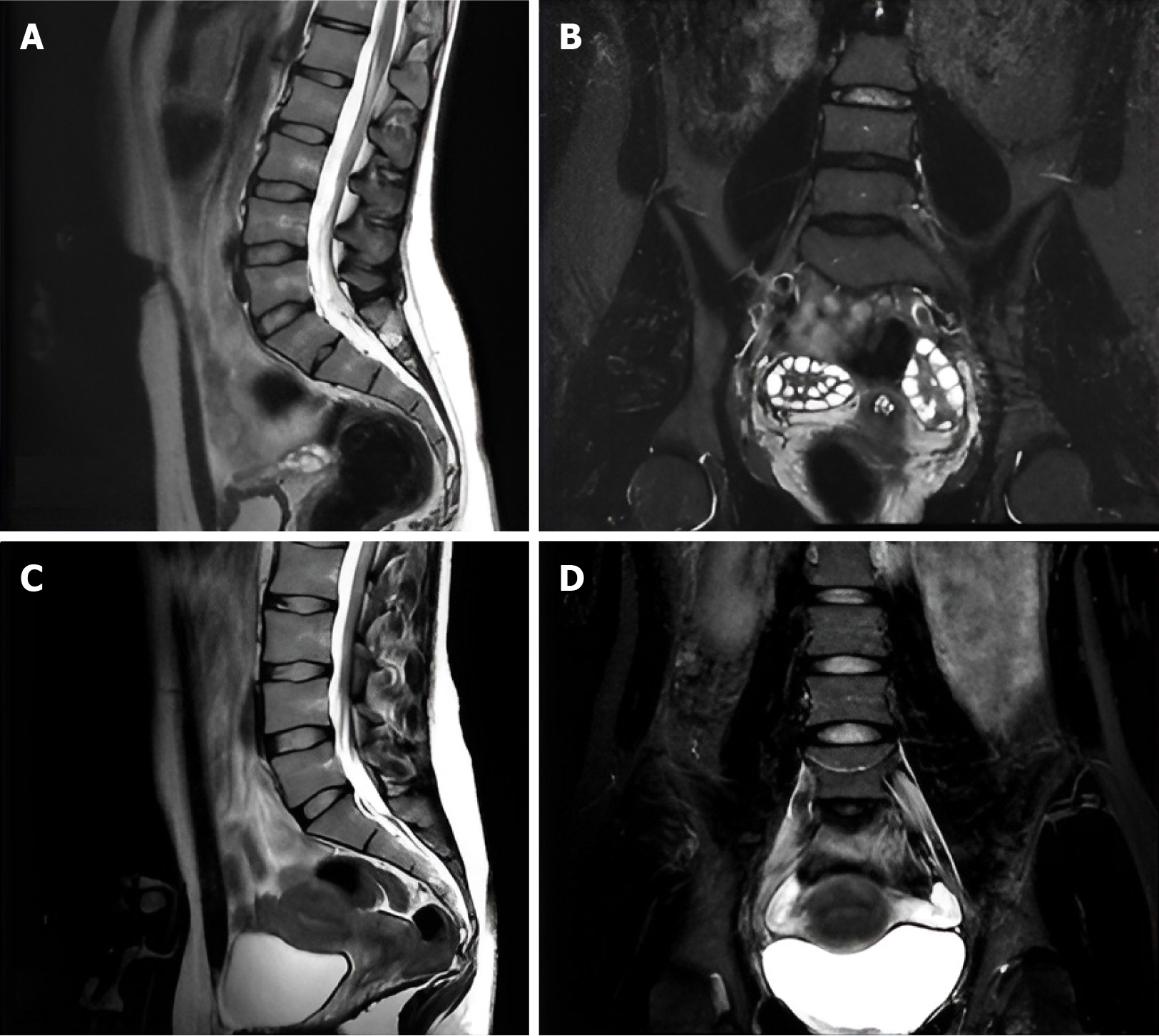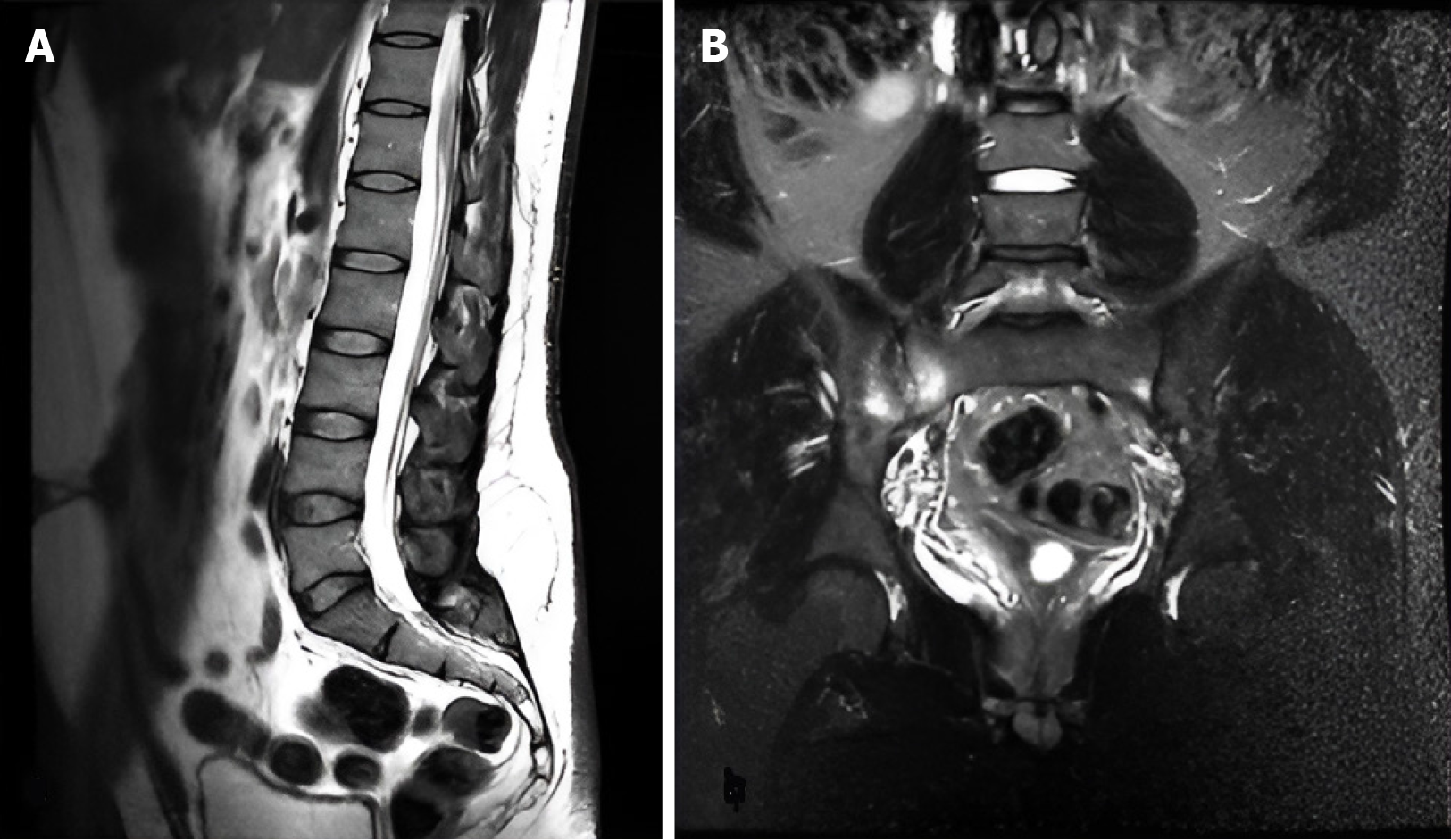Copyright
©The Author(s) 2025.
World J Radiol. Jun 28, 2025; 17(6): 107164
Published online Jun 28, 2025. doi: 10.4329/wjr.v17.i6.107164
Published online Jun 28, 2025. doi: 10.4329/wjr.v17.i6.107164
Figure 1 A 34-year-old male patient with low back and groin region pain.
A: Sagittal T2-weighted imaging showing muscular spasm; B and C: Coronal short tau inversion recovery and weighted imaging showing bone marrow edema of the femoral head bilaterally suggestive of Legg-Calve-Perthes disease.
Figure 2 A 59-year-old male patient with low back pain.
A: Sagittal weighted imaging showing disc protrusion at the level of L5-S1; B: Coronal short tau inversion recovery showing left ureteral dilatation, and the distal aspect (pelvic ureter) measuring about 10.05 mm.
Figure 3 Dual-patient magnetic resonance imaging findings: lumbar spine and pelvic pathologies.
A: Patient A: Normal lumbar spine on sagittal weighted imaging; B: Patient A: Small ovarian cystic lesions on coronal short tau inversion recovery; C: Patient B: Normal lumbar spine on sagittal T2-weighted imaging; D: Patient B: Bilateral hydrosalpinx on coronal short tau inversion recovery.
Figure 4 Sagittal and coronal magnetic resonance imaging findings in a 38-year-old male with low back pain: Normal lumbar spine and sacroiliitis.
A: Sagittal weighted imaging of a 38-year-old male with low back pain and right sciatica shows lumbar spine straightening without significant disc pathology; B: Coronal short tau inversion recovery reveals bone marrow edema, more on the right, indicating sacroiliitis.
- Citation: Al Kiswani S, Nasser M, Alzibdeh A, Lahham EE. Enhancing back pain and sciatica diagnosis: Coronal short tau inversion recovery’s role in routine lumbar magnetic resonance imaging protocols. World J Radiol 2025; 17(6): 107164
- URL: https://www.wjgnet.com/1949-8470/full/v17/i6/107164.htm
- DOI: https://dx.doi.org/10.4329/wjr.v17.i6.107164












